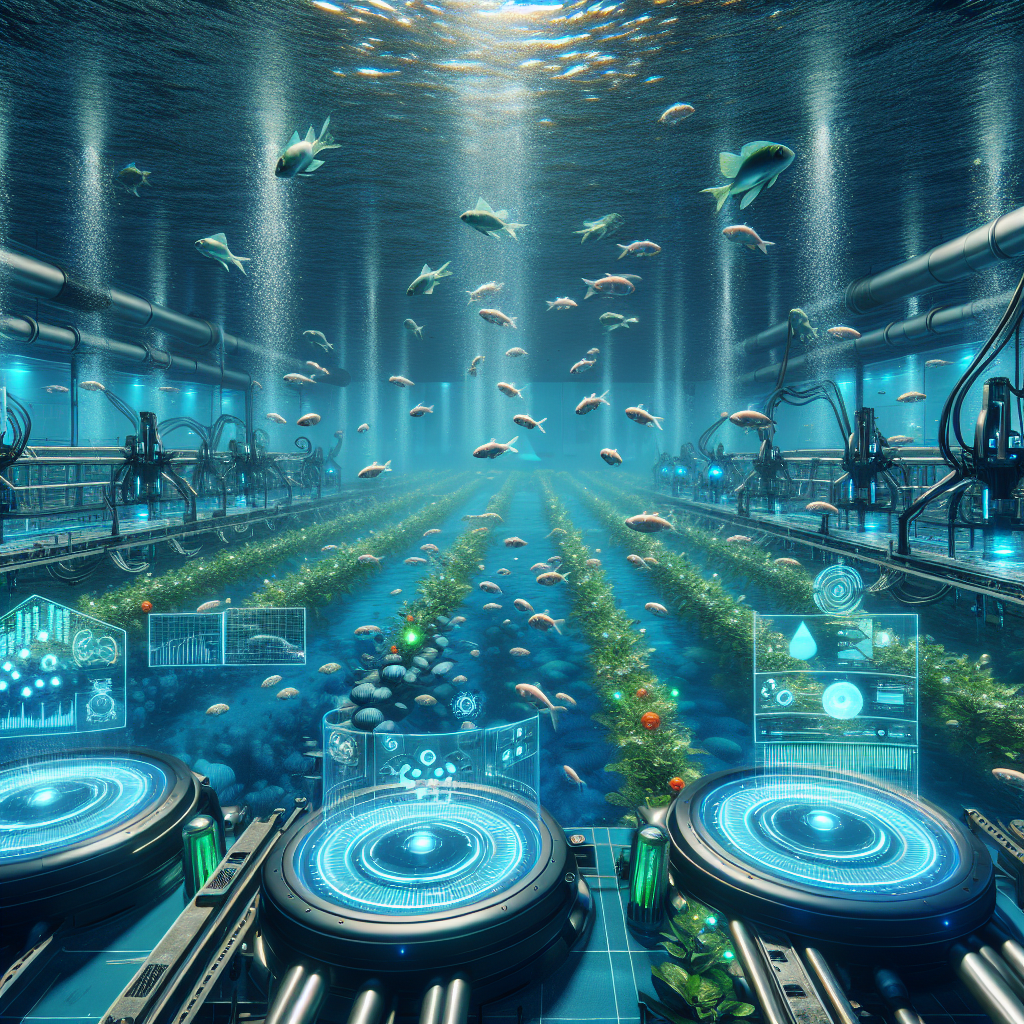The Future of AI in Aquaculture
Aquaculture, also known as fish farming, is a rapidly growing industry that plays a crucial role in meeting the increasing global demand for seafood. With traditional fishery stocks declining due to overfishing and environmental factors, aquaculture has become a sustainable alternative to provide seafood to consumers. As the aquaculture industry continues to expand, the integration of artificial intelligence (AI) technologies is becoming more prevalent, revolutionizing the way fish farms are managed and operated.
AI has the potential to significantly improve the efficiency, productivity, and sustainability of aquaculture operations. By utilizing AI-powered technologies, fish farmers can monitor and manage their farms more effectively, optimize feeding practices, and enhance disease detection and prevention measures. In this article, we will explore the future of AI in aquaculture and its potential impact on the industry.
AI Applications in Aquaculture
AI technologies have a wide range of applications in aquaculture, from monitoring water quality to predicting fish growth rates. Some of the key areas where AI is being used in aquaculture include:
1. Water Quality Monitoring: AI-powered sensors and monitoring systems can track parameters such as temperature, pH levels, oxygen levels, and ammonia concentrations in real-time. This data is crucial for maintaining optimal water conditions for fish growth and health.
2. Feeding Optimization: AI algorithms can analyze feeding patterns and fish behavior to optimize feeding schedules and quantities. By using AI, fish farmers can reduce feed waste and improve feed conversion ratios, leading to cost savings and increased profitability.
3. Disease Detection and Prevention: AI technologies can analyze fish behavior and health indicators to detect early signs of disease outbreaks. By identifying potential health issues early on, fish farmers can take proactive measures to prevent the spread of diseases and minimize losses.
4. Environmental Monitoring: AI can be used to monitor the environmental impact of aquaculture operations, such as nutrient runoff and waste disposal. By analyzing environmental data, fish farmers can implement sustainable practices to minimize their ecological footprint.
5. Predictive Analytics: AI algorithms can analyze historical data and predict future trends, such as fish growth rates and market demand. By using predictive analytics, fish farmers can make informed decisions about production planning and resource allocation.
Challenges and Opportunities
While the potential benefits of AI in aquaculture are significant, there are also challenges that need to be addressed to fully realize the potential of these technologies. Some of the key challenges include:
1. Data Quality and Availability: AI algorithms rely on large amounts of high-quality data to generate accurate predictions and insights. In aquaculture, data collection can be challenging due to the remote locations of fish farms and the lack of standardized data collection methods.
2. Technical Expertise: Implementing AI technologies in aquaculture requires specialized knowledge and technical expertise. Fish farmers may need to invest in training their staff or partnering with technology providers to effectively utilize AI solutions.
3. Cost and Scalability: The initial cost of implementing AI technologies in aquaculture can be a barrier for small-scale fish farmers. Additionally, scalability issues may arise when integrating AI systems into existing farm operations.
Despite these challenges, the opportunities presented by AI in aquaculture are immense. By harnessing the power of AI technologies, fish farmers can improve production efficiency, reduce environmental impact, and enhance overall sustainability.
FAQs
Q: How can AI help improve water quality in fish farms?
A: AI-powered sensors and monitoring systems can continuously track water quality parameters and alert fish farmers to any deviations from optimal conditions. By maintaining optimal water quality, fish health and growth can be maximized.
Q: Can AI help reduce feed waste in aquaculture operations?
A: Yes, AI algorithms can analyze feeding patterns and fish behavior to optimize feeding schedules and quantities. By reducing feed waste and improving feed conversion ratios, fish farmers can achieve cost savings and increase profitability.
Q: How does AI contribute to disease detection and prevention in aquaculture?
A: AI technologies can analyze fish behavior and health indicators to detect early signs of disease outbreaks. By identifying potential health issues early on, fish farmers can take proactive measures to prevent the spread of diseases and minimize losses.
Q: What are the key challenges of implementing AI in aquaculture?
A: Some of the key challenges include data quality and availability, technical expertise, and cost and scalability. Addressing these challenges is crucial for realizing the full potential of AI technologies in aquaculture.
In conclusion, the future of AI in aquaculture holds great promise for revolutionizing the industry and driving sustainable growth. By leveraging AI technologies, fish farmers can improve productivity, reduce environmental impact, and enhance overall efficiency. While there are challenges to overcome, the opportunities presented by AI in aquaculture are vast, making it an exciting field to watch in the coming years.

